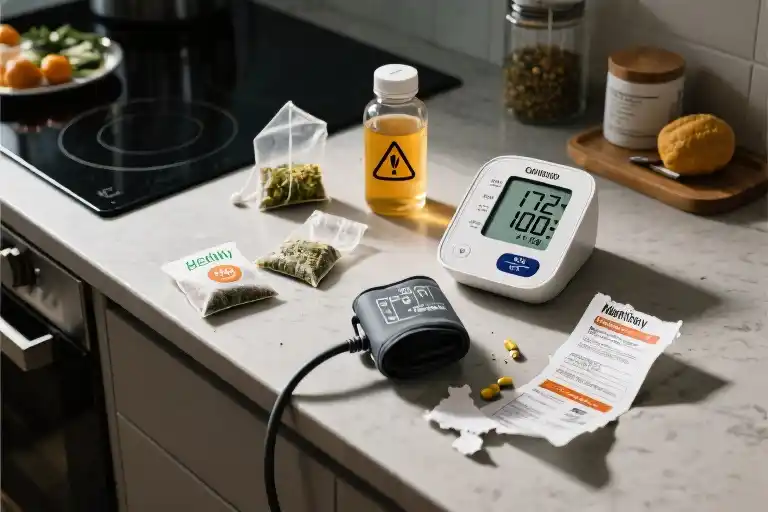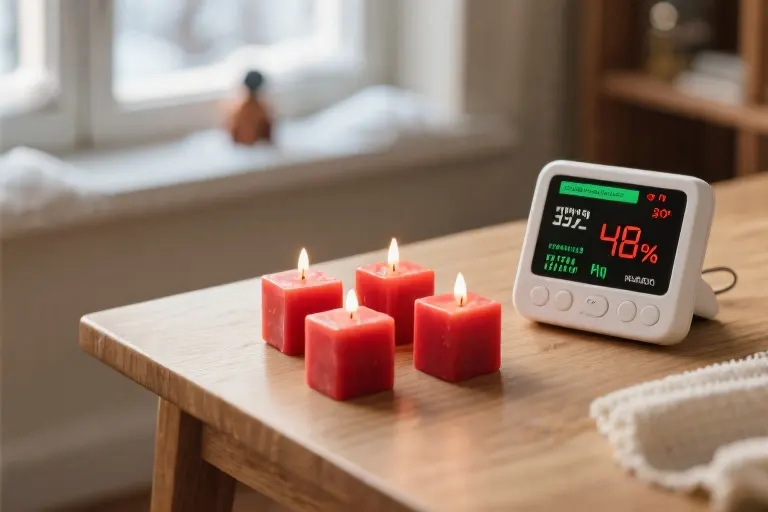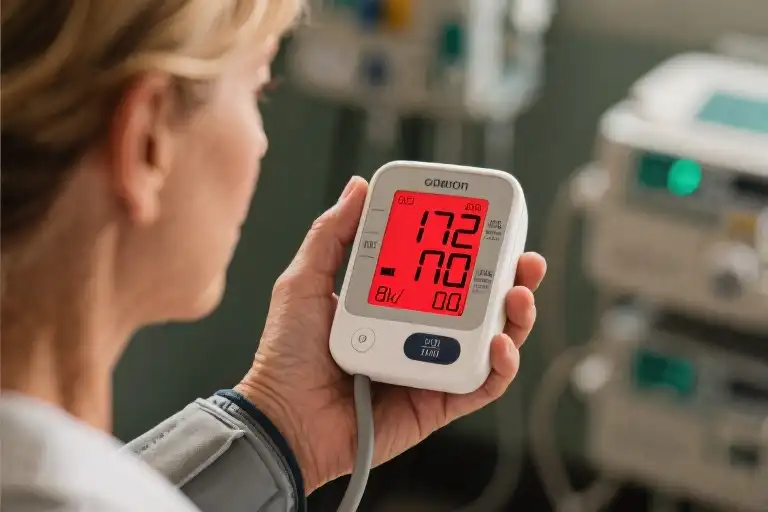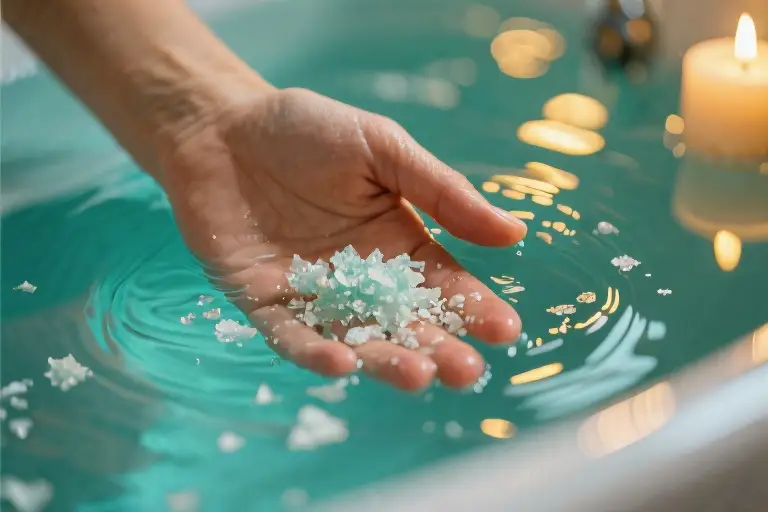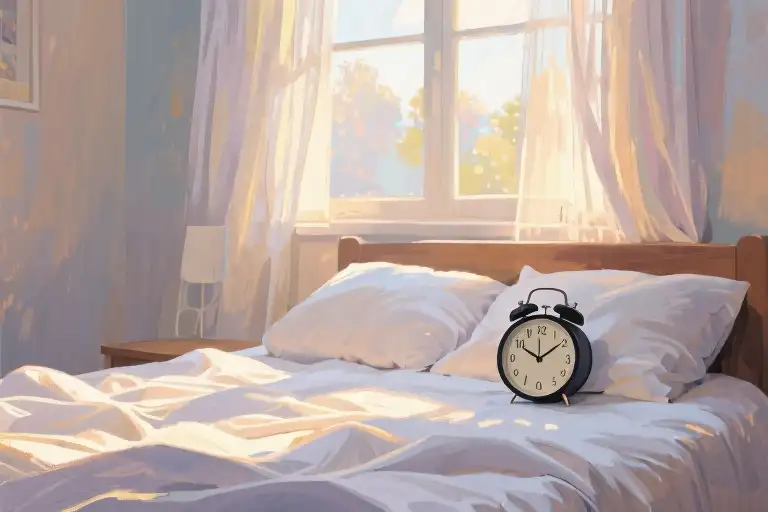The fluorescent lights of the urgent care waiting room buzzed overhead as I pressed an ice pack to my pounding temple. A nurse’s voice cut through my fog: “172 over 100 – you’re flirting with stroke territory.
My fingers instinctively went to my wrist, feeling the erratic thrum beneath the skin. This couldn’t be right. For years, my blood pressure had been textbook perfect – 110/70 on every physical exam report. I was the friend who brought kale salads to barbecues, the coworker who took the stairs two at a time. How did someone who religiously avoided sodium and logged 10,000 daily steps end up in this vinyl chair, staring at numbers that belonged to a much older, much less careful version of myself?
The beige walls seemed to pulse with each heartbeat as the reality settled in. That morning’s reading wasn’t some fluke. It capped off three months of creeping numbers: first 140/90 dismissed as exam jitters, then 158/90 blamed on white coat hypertension, until finally this terrifying peak. The nurse’s BP cuff had become a crystal ball showing a future I never imagined – one with pill organizers and constant vigilance.
As the blood pressure monitor cycled again with its ominous whir, I noticed my reflection in the glass cabinet of medical supplies. The woman looking back wore the same Lululemon leggings from yesterday’s spin class, her hydration bottle still dangling from a crossbody strap. The disconnect between my health-conscious exterior and these alarming internal signals felt like some cruel joke.
A clipboard landed in my lap with forms to sign. The top sheet listed “amlodipine” under medications – a word I’d need to make peace with, possibly for life. Outside the window, a group of joggers passed by in neon gear, their laughter floating through the glass. I used to be that person. Maybe I still was. But first, I needed to understand how my body had silently crossed into this dangerous new territory without any obvious warning signs.
My phone buzzed with a calendar alert for tomorrow’s 6am boot camp class. The irony stung. All those hours spent scrutinizing nutrition labels and tracking heart rate zones, yet I’d missed the most critical metric of all. As the physician entered with my discharge papers, I made a silent vow: if blood pressure could ambush someone like me, it could happen to anyone. And that was a story worth telling.
Three Tests, Three Misjudgments
The first warning came disguised as a routine checkup. I’d visited my clinic for a minor skin irritation when the nurse casually mentioned my blood pressure reading: 140/90 mmHg. ‘Probably just stress,’ she said, tapping the screen where my normally low 110/70 mmHg baseline should have been. I accepted the explanation – after all, I’d been juggling work deadlines and family obligations. The number lingered in my mind like an unresolved chord, but I dismissed it with the same nonchalance as the medical staff.
Four weeks later, during a follow-up visit, the digital display showed 158/90 mmHg. This time, the nurse chuckled knowingly. ‘Classic white coat hypertension,’ she assured me, referencing that peculiar phenomenon where blood pressure spikes in clinical settings. ‘Your arteries are practically panicking at the sight of my scrubs.’ We both laughed, but my palms stayed damp against the examination table paper.
The crescendo arrived during a scheduled specialist consultation. As the cuff tightened, I watched the numbers climb like a stock market ticker – 160/95…168/98…172/100 mmHg. The physician’s eyebrows lifted slightly, the only betrayal of concern. ‘Any reading over 170/100 mmHg warrants immediate evaluation,’ he stated matter-of-factly, scribbling a prescription for amlodipine. The math didn’t compute: dedicated power walks, home-cooked meals, seven-hour sleeps – how did these variables equal lifelong medication?
Each episode followed an unsettling pattern:
- Initial dismissal: Medical professionals attributing abnormalities to transient factors
- Escalating numbers: Progressive climbs in systolic and diastolic readings
- Cognitive dissonance: My healthy lifestyle clashing with deteriorating metrics
What began as an incidental finding had snowballed into a legitimate health crisis, all while wearing the camouflage of plausible explanations. The real revelation wasn’t just the numbers – it was recognizing how easily we accept convenient narratives when they align with our self-perceptions. That 172/100 mmHg reading wasn’t a fluke; it was the culmination of overlooked data points finally demanding attention.
The Blind Spots in My Healthy Lifestyle
For years, I prided myself on maintaining what I believed was a textbook-perfect healthy routine. My mornings began with 45-minute power walks, my lunchbox always contained leafy greens and lean proteins, and I hadn’t touched a soda in years. Yet there I was, staring at a blood pressure reading of 172/100 mmHg – numbers that belonged to someone with uncontrolled hypertension, not a health-conscious individual like me.
The Wellness Checklist That Failed Me
Here’s what my ‘healthy’ daily regimen looked like:
- Exercise: 10,000+ steps daily with intentional cardio
- Diet: Mediterranean-style meals, minimal processed foods
- Sleep: 7-8 hours nightly with consistent bedtime
- Vices: No smoking, moderate alcohol (1-2 drinks weekly)
By all standard metrics, I should have had blood pressure closer to an athlete’s than a patient’s. This contradiction sent me down a rabbit hole of research, where I discovered that hidden causes of high blood pressure often lurk in unexpected places – even in habits we consider virtuous.
Herbal Tea: My Wellness Trap
My biggest revelation came when analyzing my beverage switch. Two years prior, I’d replaced diet soda with herbal tea, believing it to be a healthier alternative. What I didn’t realize:
| Tea Type | Active Compound | Potential BP Impact |
|---|---|---|
| Licorice Root | Glycyrrhizin | Raises blood pressure by retaining sodium |
| Ginseng | Ginsenosides | May interfere with blood pressure regulation |
| Hibiscus | Anthocyanins | Generally lowers BP (safe option) |
I’d been casually drinking licorice-infused blends almost daily – essentially dosing myself with a natural hypertensive. This experience taught me that healthy lifestyle high blood pressure scenarios often stem from:
- Overlooked compounds in ‘natural’ products
- Compensatory behaviors (e.g., eating more salt because you exercise)
- Silent stressors like poor sleep quality despite adequate duration
The Expanded Risk Checklist
Beyond herbal teas, these less-discussed factors emerged in my research:
- NSAID overuse: My occasional ibuprofen for headaches
- Dehydration: From increased coffee intake during work crunch periods
- Isometric exercise: The intense yoga poses I’d recently added
- Nighttime light exposure: Affecting circadian-regulated BP drops
What stung most was realizing that my meticulous health tracking had blind spots. I could recite my macros and resting heart rate, but never thought to monitor how these blood pressure spikes suddenly might relate to my ‘healthy’ choices.
Reframing Healthy Living
Now, I approach wellness with new rules:
- Test assumptions: Just because something’s ‘natural’ doesn’t mean it’s neutral
- Monitor differently: Track BP response to new habits, not just the habits themselves
- Question trends: If multiple readings show elevation, investigate – don’t dismiss
This chapter isn’t about fear-mongering, but about cultivating informed vigilance. As my cardiologist later told me: “Health isn’t about perfect choices, but about understanding how your unique body responds to each choice.” That wisdom changed everything.
Blood Pressure Emergency Protocol: When Numbers Become Action Items
That moment when the nurse said my 172/100 mmHg reading could mean imminent stroke risk still haunts me. What stuck with me wasn’t just the fear, but the realization: I had no protocol for blood pressure emergencies. Here’s what I’ve learned about creating your personal hypertension response system.
The Five Golden Windows for Home Monitoring
- Morning Baseline (Before caffeine/medication)
- Why it matters: Captures your true resting state
- Pro tip: Sit quietly for 5 minutes first, feet flat on the floor
- Post-Exercise Check (30 minutes after workout)
- Key insight: Healthy dips (10-15 mmHg) confirm good vascular response
- Red flag: Spikes over 160/100 need medical consultation
- Evening Wind-Down (Between dinner & bedtime)
- Critical because: 20% of hypertensives show nocturnal spikes
- Game changer: Linked my evening tea habit to elevated readings
- Stress Event Follow-Up (20 minutes after stressful incident)
- Reality check: My “white coat hypertension” was actually chronic stress response
- Smart move: Created a stress-buffer playlist for post-meeting checks
- Medication Timing Verification (Peak effect hours)
- For amlodipine users: Check 6-12 hours after dose
- Discovered: My “healthy” grapefruit breakfast was interfering with absorption
Your Blood Pressure Decision Tree
| Reading Range | Immediate Action | Next Steps |
|---|---|---|
| <120/80 | Maintain routine monitoring | Celebrate healthy habits |
| 120-139/80-89 | Triple-check (3 readings over 3 days) | Start lifestyle journal |
| 140-159/90-99 | Schedule doctor visit within 72 hours | Begin sodium tracking |
| 160-179/100-109 | Urgent same-day clinic evaluation | Prepare ER go-bag (see checklist) |
| ≥180/≥110 | Seek emergency care immediately | Have someone drive you |
Pro tip: Photograph this table and save as your phone lock screen
ER Communication Toolkit
When facing blood pressure spikes suddenly, effective ER communication can save critical minutes:
- The 30-Second Summary
- “My baseline is 110/70, today’s home readings were [X], [Y], [Z] at [times]”
- “I take [medications] and have [allergies]”
- Symptoms That Matter Most
- Never dismiss: Visual changes, chest pressure, or unilateral weakness
- Often overlooked: Sudden nosebleeds with headache
- The Magic Question
- “Could this be hypertensive urgency versus emergency?”
- Why it works: Triggers specific protocol consideration
Your Hypertension Go-Bag Essentials
- Printed medical history (including family CVD events)
- 7-day medication supply in original bottles
- Home blood pressure log (showing progression)
- Comfort items: Noise-canceling headphones, eye mask
- Hydration pack (avoiding ER water fountain trips)
Remember: A reading over 170/100 mmHg isn’t just a number—it’s your body’s fire alarm. Having these protocols ready transformed my fear into preparedness.
The Philosophy in My Pillbox
The First Pill Diary
The amber plastic vial felt alien in my palm that first morning. I stared at the tiny amlodipine tablet – this unassuming 2.5mg disc would become my lifelong companion. My thumb hovered over the childproof cap as my brain launched protest banners:
“I power-walk 10,000 steps daily”
“My BMI is 22!”
“I swapped soda for herbal tea!”
The cognitive dissonance was real. Here I was, a poster child for preventive health, suddenly initiated into the chronic medication club. That first dose required more psychological preparation than physical – I actually set a phone reminder titled “Negotiation Time” to delay the moment.
Three psychological hurdles emerged:
- Identity Threat: “Healthy people don’t need daily pills” narrative clashing with my self-image
- Future Anxiety: Visions of pill organizers dominating my travel toiletry bag
- Control Loss: Resentment toward this new non-negotiable routine
Side Effects Survival Guide
When the initial dizziness hit during my afternoon Zoom meeting, I nearly declared the medication intolerable. Then I discovered most side effects follow predictable patterns:
- Week 1-2: Dizziness peaks 2-4 hours post-dose (pro tip: take at bedtime)
- Month 1: Mild ankle swelling (counter with magnesium-rich foods)
- Month 3: Occasional flushing (stay hydrated with electrolyte water)
My game-changer? Creating a “Side Effect vs. Benefit” ledger in my notes app. Every unpleasant sensation got logged alongside observable improvements:
| Date | Side Effect | Positive Change |
|---|---|---|
| 6/12 | Headache | BP dropped to 135/85 |
| 6/15 | Fatigue | No more morning nosebleeds |
This tangible evidence helped me push through the adjustment period.
Rituals Over Routine
The breakthrough came when I transformed pill-taking from clinical obligation into self-care ceremony. Here’s my current “Pillbox Philosophy” that made peace with long-term management:
- The Gratitude Chaser
- After swallowing the pill, I name three things my body did well that day (e.g., “Thanks for carrying me up those stairs without panting”)
- The Companion Cup
- Using my favorite handmade mug (inscribed “One Day at a Time”) for the accompanying water
- Progress Marker
- Placing a colorful dot on my calendar each successful medication day – watching the chain grow motivates continuation
For travel, I repurposed an elegant mint tin into a portable pill case. Decorating it with stickers from destinations where the medication accompanied me (“Amlodipine in Amsterdam!”) reframed it as a life enabler rather than limitation.
The Liberation Paradox
Six months into this journey, an unexpected realization emerged: the very medication that initially symbolized lost freedom actually granted new autonomy. With stabilized blood pressure, I:
- Regained energy for sunrise swims
- Stopped obsessively checking pharmacy BP machines
- Could focus on work without headache distractions
That little pillbox now sits unceremoniously beside my vitamins – just another tool in my health toolkit. The psychological shift wasn’t about surrendering to medication, but rather embracing the wisdom of supported vitality.
The Hidden Truth About Your ‘Healthy’ Habits
That herbal tea you’ve been drinking religiously? The organic supplements lining your kitchen counter? The stress-relief practices you swear by? They might not be as benign as you think. My journey with sudden hypertension taught me one brutal lesson: what we assume is healthy could be silently sabotaging our well-being.
The Wake-Up Call You Can’t Ignore
When my doctor said those words – “This medication might be for life” – it felt like the ground dropped beneath me. Here’s the uncomfortable truth no one talks about: you can do everything ‘right’ and still develop high blood pressure. The American Heart Association confirms that nearly 20% of hypertension cases occur in people with no obvious risk factors. That’s 1 in 5 seemingly healthy adults walking around with a ticking time bomb.
Your Lifestyle Audit Checklist
Before you dismiss this as someone else’s problem, try this quick self-assessment:
- Beverage swaps: Are your ‘healthy’ alternatives actually healthier? (Certain herbal teas like licorice root can spike BP)
- Supplement routine: That ‘natural’ energy booster might contain hidden stimulants
- Exercise patterns: Even fitness fanatics can develop hypertension if recovery is inadequate
- Stress management: Your meditation app won’t undo chronic work stress damage
The Silent Saboteurs No One Mentions
During my three-month detective work, I discovered shocking connections:
- The Herbal Tea Trap
- Many ‘calming’ blends contain licorice (glycyrrhizin) that retains sodium
- Even caffeine-free varieties may have vasoconstrictive herbs
- Supplement Surprises
- Ginseng and guarana often hide in ‘natural’ energy products
- Some protein powders contain hidden sodium bombs
- Wellness Culture Blind Spots
- Overzealous hydration can dilute essential electrolytes
- Extreme clean eating may lack blood-pressure-friendly nutrients
From Shock to Empowerment
The real turning point came when I stopped asking “Why me?” and started asking “What now?”. Here’s what worked:
- The 72-Hour Test: Eliminate one ‘healthy’ habit at a time and monitor BP changes
- The Label Decoder: Learning to spot hidden sodium, stimulants, and vasoactive compounds
- The Tracking Trick: Using a simple blood pressure diary (like this downloadable template) to spot patterns
Your Next Right Step
That BP reading staring back at you isn’t just a number – it’s a conversation starter. Before you dismiss it as a fluke or stress reaction, consider this: your body might be trying to tell you something about those supposedly healthy choices.
“The greatest deception men suffer is from their own opinions.” – Leonardo da Vinci
Could your unwavering confidence in your healthy habits be the very thing blinding you to risks? Download our free Blood Pressure & Lifestyle Tracker and find out what your numbers are really saying.

